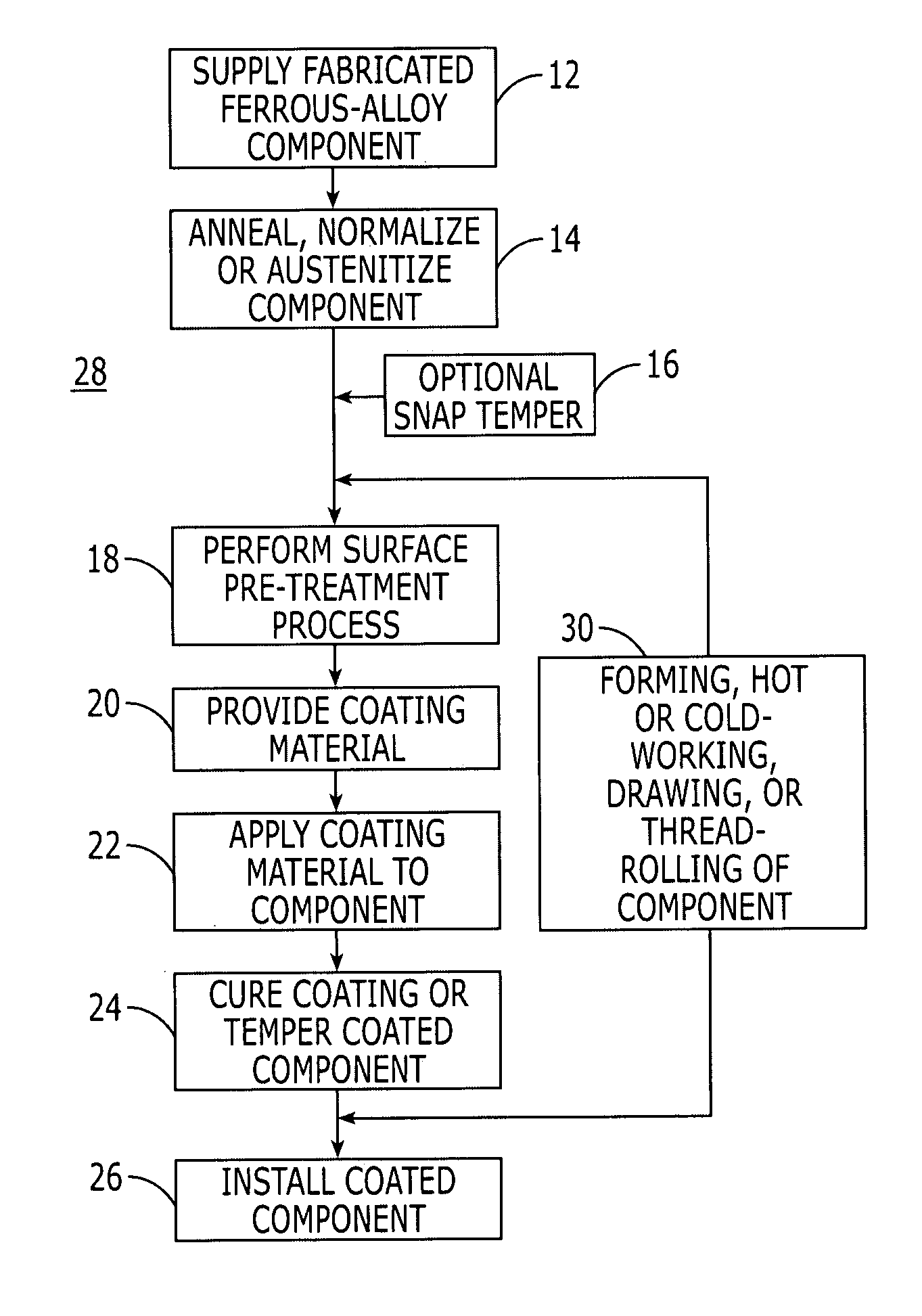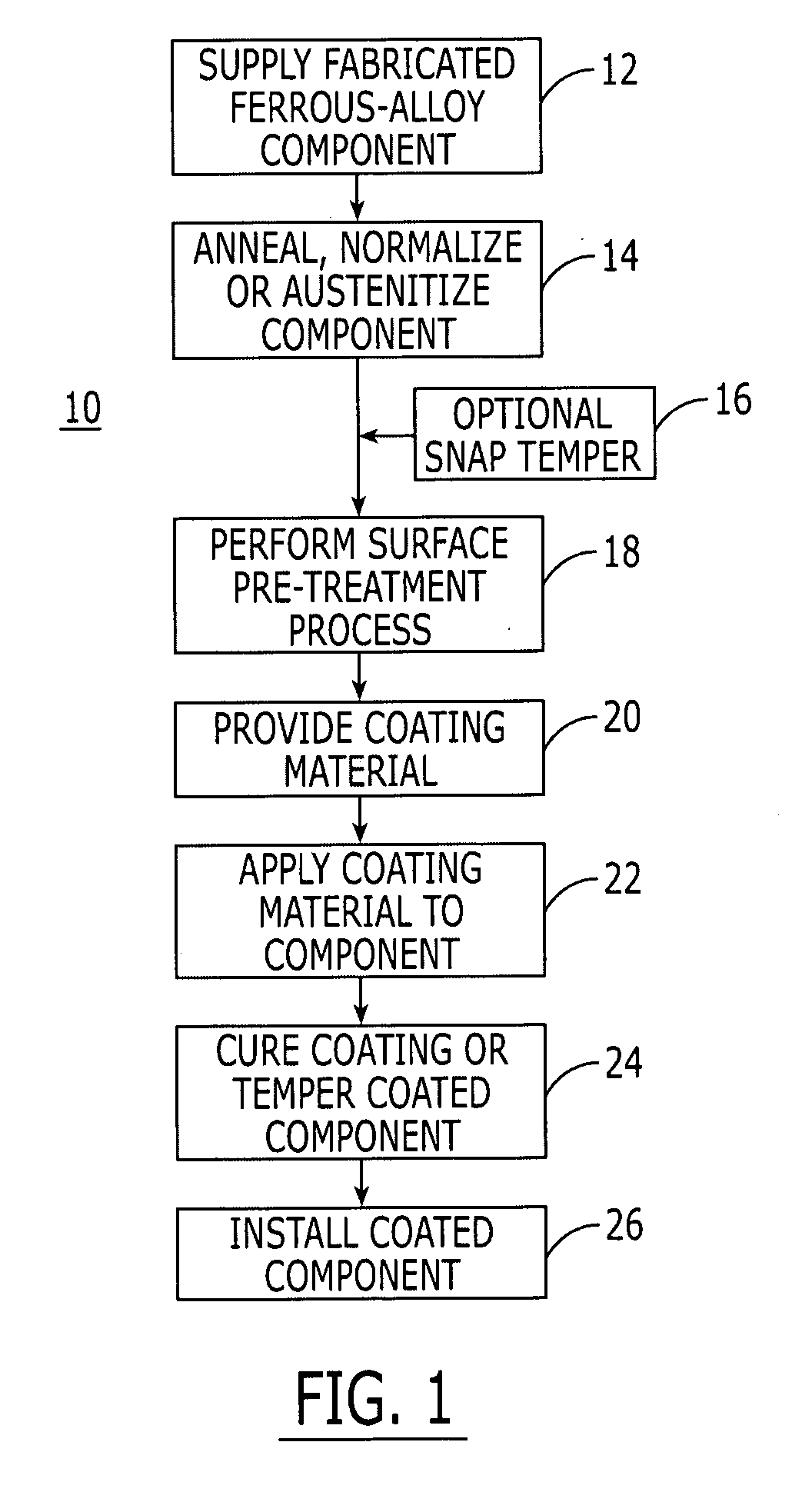Surface pre-treatment method for pre-coated heat-treatable, precipitation-hardenable stainless steel ferrous-alloy components and components coated thereby
a technology of precipitation hardening and stainless steel ferrous alloys, applied in the direction of superimposed coating process, transportation and packaging, synthetic resin layered products, etc., can solve the problems of not finding a single replacement coating or system that meets all engineering requirements, labor-intensive, time-consuming, and, consequently, very costly wet-sealant process, etc., to achieve the effect of improving compatibility or inter-relationship
- Summary
- Abstract
- Description
- Claims
- Application Information
AI Technical Summary
Benefits of technology
Problems solved by technology
Method used
Image
Examples
example
[0050] A comparative 2000 hour salt spray exposure test performed on A-286 stainless steel Hi-Set.RTM. fasteners having various surface preparation methods employed prior to the application of Hi-Kote.RTM. 1 aluminum pigmented coating. Hi-Kote.RTM. 1 is a phenolic resin-based aluminum coating as described above, and has been demonstrated to possess excellent corrosion protection when subjected to 2000-hour salt spray corrosion evaluations, as well as high temperature resistance (to 400.degree. F.), excellent resistance to fuel, hydraulic fluids, solvents when applied on a wide variety of metallic surfaces.
[0051] The salt spray evaluation testing was performed in accordance with ASTM B117 apparatus and standard test method procedures. Aluminum-alloy test speciment assemblies, each containing six fastener installations, were placed at a 15-degree angle to the horizontal inside the salt spray test chamber for a period of 2000 hours.
[0052] All fasteners used in the evaluation were selec...
PUM
| Property | Measurement | Unit |
|---|---|---|
| thickness | aaaaa | aaaaa |
| temperature | aaaaa | aaaaa |
| thickness | aaaaa | aaaaa |
Abstract
Description
Claims
Application Information
 Login to View More
Login to View More - R&D
- Intellectual Property
- Life Sciences
- Materials
- Tech Scout
- Unparalleled Data Quality
- Higher Quality Content
- 60% Fewer Hallucinations
Browse by: Latest US Patents, China's latest patents, Technical Efficacy Thesaurus, Application Domain, Technology Topic, Popular Technical Reports.
© 2025 PatSnap. All rights reserved.Legal|Privacy policy|Modern Slavery Act Transparency Statement|Sitemap|About US| Contact US: help@patsnap.com



